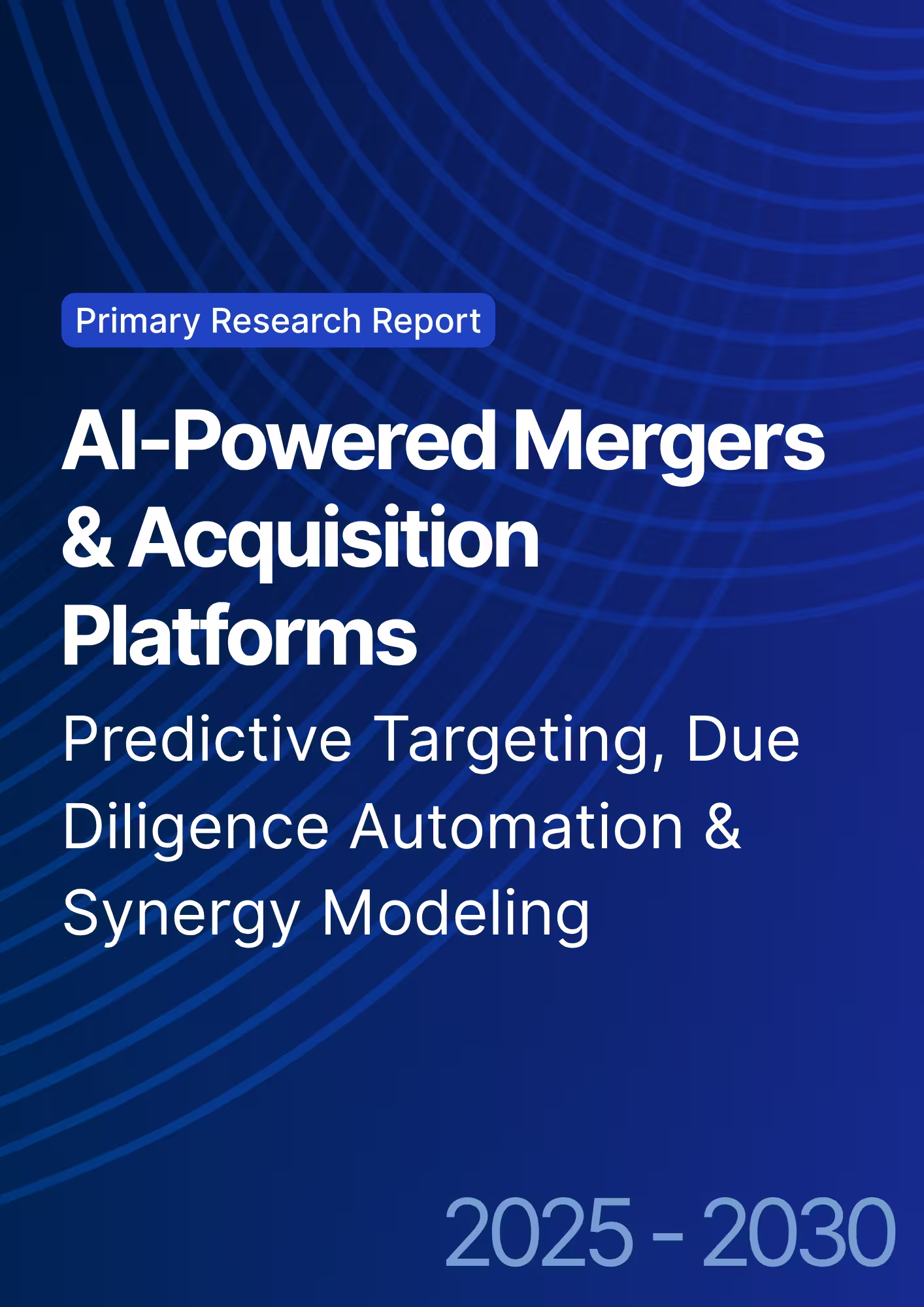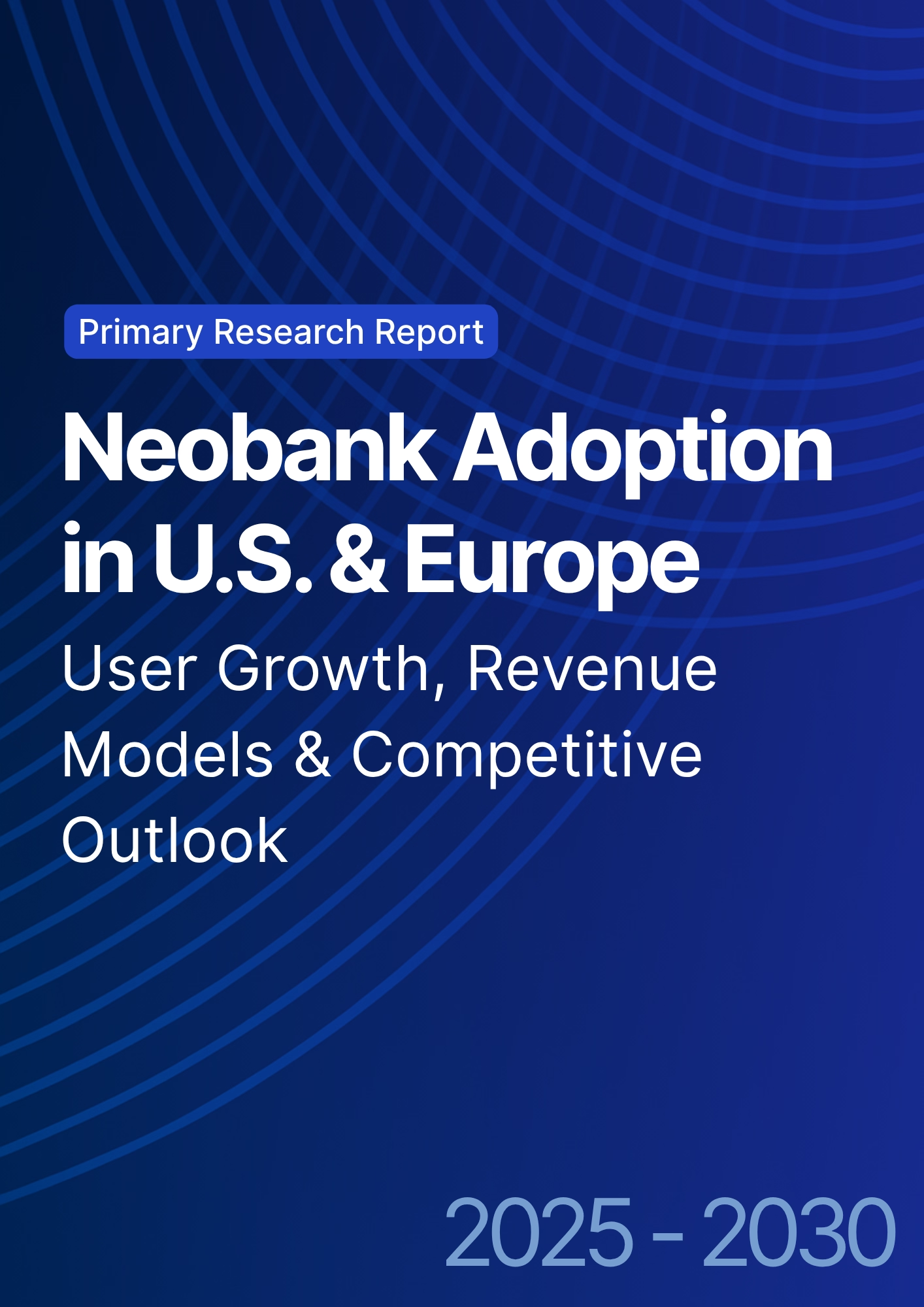

68 Circular Road, #02-01 049422, Singapore
Revenue Tower, Scbd, Jakarta 12190, Indonesia
4th Floor, Pinnacle Business Park, Andheri East, Mumbai, 400093
Cinnabar Hills, Embassy Golf Links Business Park, Bengaluru, Karnataka 560071
Connect With Us
Quantum Computing Applications in Portfolio Optimization: Risk Modeling & Return Projections - Innovation & R&D
This research explores the application of quantum computing in portfolio optimization, focusing on risk modeling and return projections in USA and North America from 2025 to 2030. The report examines how quantum algorithms can enhance portfolio management by offering superior computational speed and precision in forecasting risk and optimizing returns. By integrating quantum technologies with traditional financial models, this study provides insights for asset managers and institutional investors looking to leverage quantum computing for better portfolio management and strategic decision-making.

What's Covered?
Report Summary
Key Takeaways
- Quantum computing market for portfolio optimization in North America projected to grow from $320 million in 2025 to $5.1 billion by 2030, CAGR 56%.
- Quantum algorithms for portfolio optimization expected to increase return projections by 18% by 2030.
- Risk modeling accuracy with quantum computing projected to improve by 30% compared to classical methods.
- Quantum computing expected to reduce portfolio optimization time by 40%, increasing efficiency in decision-making.
- AI-powered quantum models for portfolio optimization will cover 50% of global asset management portfolios by 2030.
- Return projections for large institutional portfolios are expected to improve by 15-18% annually using quantum algorithms.
- Risk diversification across portfolios expected to increase by 25% with quantum computing applications.
- Institutional investors in the US expected to account for 60% of quantum computing investments by 2030.
- Quantum computing-driven strategies expected to offer higher alpha generation in volatile markets.
- ROI for quantum computing applications in financial portfolios projected at 22-28% by 2030.
-
Key Metrics
Market Size & Share
The quantum computing market for portfolio optimization in North America is projected to grow from $320 million in 2025 to $5.1 billion by 2030, representing a CAGR of 56%. The rapid expansion of this market is driven by the increasing interest in quantum computing for risk modeling, portfolio optimization, and return projections. Institutional investors in the US are expected to lead adoption, contributing 60% of the total investment in quantum technologies by 2030. Quantum computing will enhance portfolio optimization time by 40%, allowing asset managers to make faster, more accurate decisions. Return projections for large portfolios are projected to improve by 18%, as quantum algorithms can evaluate complex financial scenarios with higher precision than classical models. Risk diversification across portfolios will increase by 25%, as quantum computing allows for more sophisticated analysis of financial correlations and market behaviors. The ability to model multiple scenarios simultaneously will enable better decision-making under various market conditions. ROI for quantum computing in portfolio optimization is expected to reach 22–28% by 2030, driven by better alpha generation, optimized returns, and more accurate risk assessments.
.png)
Market Analysis
The quantum computing market for portfolio optimization in North America is expected to grow rapidly, from $320 million in 2025 to $5.1 billion by 2030, reflecting a CAGR of 56%. By 2030, quantum-powered portfolio optimization models will cover 50% of global asset management portfolios, especially for institutional investors. Quantum algorithms are expected to improve return projections by 18%, surpassing traditional financial models in terms of accuracy and speed. Risk modeling will see a 30% improvement in accuracy due to quantum computing’s ability to process complex datasets and evaluate multiple scenarios simultaneously. These innovations will reduce portfolio optimization time by 40%, allowing for quicker decision-making and better asset allocation. AI-powered quantum models will also facilitate better risk diversification, increasing it by 25% by 2030. Institutional investors will lead the adoption, contributing 60% of investments, driven by their need for more efficient and precise portfolio management tools. Additionally, quantum computing will enable higher alpha generation in volatile markets by predicting market movements with greater accuracy, which will result in better portfolio performance and increased ROI of 22–28% by 2030. The continued development of quantum technologies will drive substantial improvements in financial analytics and portfolio optimization strategies.
Trends & Insights
The quantum computing market for portfolio optimization is experiencing rapid growth in North America, with the market size projected to expand from $320 million in 2025 to $5.1 billion by 2030, reflecting a CAGR of 56%. Key trends include the increasing adoption of quantum-powered algorithms for risk modeling and return projections, which will improve forecasting accuracy by 30% compared to traditional models. AI-driven quantum models will process large datasets more efficiently, reducing portfolio optimization time by 40%. By 2030, 50% of global portfolios will be managed using quantum algorithms, reflecting the growing reliance on data-driven investment strategies. Return projections for large institutional portfolios are expected to improve by 18% annually, driven by quantum models’ ability to evaluate complex financial scenarios more accurately than classical systems. Additionally, risk diversification will increase by 25%, enhancing portfolio resilience. Cross-market alpha generation is projected to improve, with quantum computing enabling better risk-adjusted returns in volatile markets. The ROI from quantum applications in portfolio optimization is expected to be 22–28% by 2030, supported by better decision-making, enhanced risk management, and more efficient portfolio allocations. Overall, quantum computing will drive significant improvements in portfolio optimization, offering a competitive edge for institutional investors.
.png)
Segment Analysis
The quantum computing market for portfolio optimization in North America is segmented by technology type, institution size, and investment strategy. Large institutional investors, including pension funds, hedge funds, and endowments, are expected to dominate the market, contributing 60% of total investment in quantum technologies by 2030. The adoption of quantum-powered models will increase AI-powered risk modeling and return projections, improving portfolio optimization by 40% in terms of time efficiency and risk management. The share of direct investment portfolios managed by quantum models is expected to rise to 50% by 2030, with an increased focus on risk-adjusted return strategies. Senior management in large asset management firms will increasingly rely on quantum analytics for making more informed, data-driven decisions. These institutions will see higher alpha generation and improved return projections of 18% annually, while cross-border investment and global diversification will become easier with quantum models. ROI from quantum integration is expected at 22–28%, driven by faster decision-making, higher efficiency, and more robust portfolio diversification. Segment analysis shows that larger institutions will lead in adoption, while mid-tier and smaller funds will follow as quantum computing becomes more accessible.
Geography Analysis
The quantum computing market for portfolio optimization in North America will be primarily driven by the US, which is expected to account for 60% of global market share by 2030. The US will remain the dominant market for quantum computing applications in finance, benefiting from early adoption, substantial investments in AI-powered quantum technologies, and regulatory alignment that encourages technological innovation in the financial sector. Canada is expected to contribute to the remaining 40%, with increased adoption in institutional investors and fintech firms. Return projections for large institutional portfolios are expected to increase by 18% annually in the US, as quantum computing enhances forecasting accuracy and asset allocation. Risk diversification will rise by 25% due to quantum computing’s ability to analyze complex global financial datasets. By 2030, quantum models will drive 50% of portfolio management decisions in North America, improving operational efficiency and reducing portfolio optimization time by 40%. ROI for quantum computing in portfolio optimization will be 22–28%, driven by better decision-making and higher profitability. The US market will continue to lead global adoption, while Canada will follow as fintech and institutional investors seek quantum-powered portfolio management solutions.
.png)
Competitive Landscape
The competitive landscape for quantum computing applications in portfolio optimization is being shaped by financial institutions, tech companies, and AI solutions providers. Major players such as IBM, Google, D-Wave, and Microsoft are expected to capture 45% of market share in North America, providing quantum computing platforms and AI-powered algorithms for portfolio management. Asset managers like BlackRock, Vanguard, and Goldman Sachs are integrating quantum solutions to enhance risk modeling and improve return projections. These financial institutions are expected to manage 50% of global portfolios with quantum-powered models by 2030. The adoption of quantum solutions will reduce portfolio optimization time by 40%, enabling faster decision-making and better capital deployment. AI-driven quantum models will play a critical role in improving risk diversification, with a 25% increase in global portfolio performance. Tech companies offering quantum solutions will have a competitive edge by providing tailored quantum computing applications for portfolio optimization. ROI for financial institutions is expected at 22–28% by 2030, driven by higher alpha generation, more accurate forecasting, and optimized investment strategies. The competitive landscape will be shaped by partnerships between tech firms and financial institutions, enabling widespread adoption of quantum computing solutions in the portfolio management industry.
Report Details
Proceed To Buy
Want a More Customized Experience?
- Request a Customized Transcript: Submit your own questions or specify changes. We’ll conduct a new call with the industry expert, covering both the original and your additional questions. You’ll receive an updated report for a small fee over the standard price.
- Request a Direct Call with the Expert: If you prefer a live conversation, we can facilitate a call between you and the expert. After the call, you’ll get the full recording, a verbatim transcript, and continued platform access to query the content and more.


68 Circular Road, #02-01 049422, Singapore
Revenue Tower, Scbd, Jakarta 12190, Indonesia
4th Floor, Pinnacle Business Park, Andheri East, Mumbai, 400093
Cinnabar Hills, Embassy Golf Links Business Park, Bengaluru, Karnataka 560071
Request Custom Transcript
Related Transcripts
$ 1450


68 Circular Road, #02-01 049422, Singapore
Revenue Tower, Scbd, Jakarta 12190, Indonesia
4th Floor, Pinnacle Business Park, Andheri East, Mumbai, 400093
Cinnabar Hills, Embassy Golf Links Business Park, Bengaluru, Karnataka 560071













